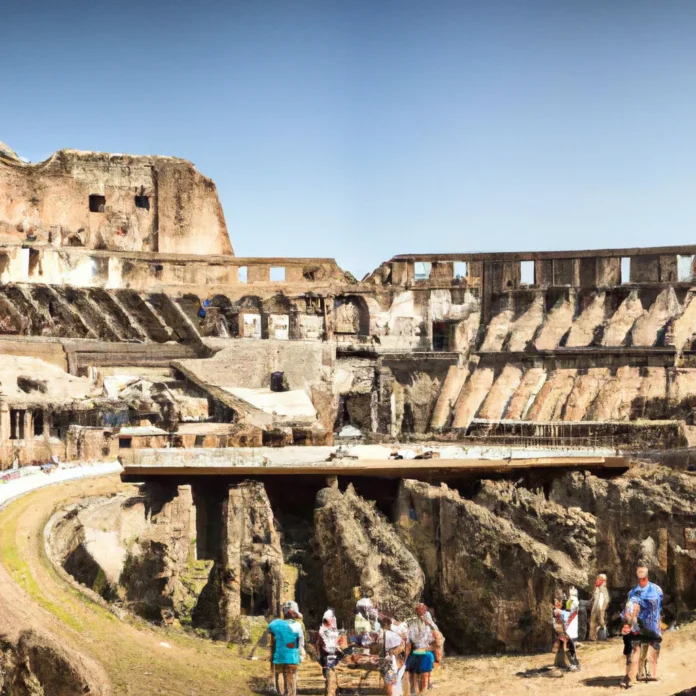Colosseum Arena Floor, Roman Forum and Palatine Hill Guided Tour
When visiting Rome, one cannot overlook the importance of the Colosseum, Roman Forum, and Palatine Hill. These sites are not just historical landmarks; they are vital components of the ancient Roman civilization that shaped the world. In this comprehensive guide, we will discuss everything you need to know about the Colosseum Arena Floor, the Roman Forum, and Palatine Hill. We will also provide insights on how to book your guided tour to ensure a memorable experience.
The Colosseum: A Glimpse Into Ancient Rome
The Colosseum, also known as the Flavian Amphitheatre, is one of the most iconic structures in Rome. Constructed between 70-80 AD, this architectural marvel was primarily used for gladiatorial contests and public spectacles. It could accommodate up to 80,000 spectators, making it a focal point of entertainment in ancient Rome. The arena floor of the Colosseum is particularly significant, as it was the stage for many of these events.
The Arena Floor: History and Significance
The arena floor of the Colosseum was originally made of wood and covered with sand to absorb the blood spilled during the games. This area was where gladiators fought fierce battles, and it also served as the backdrop for various performances, including mock sea battles and animal hunts. Today, the arena floor has been partially restored, allowing visitors to walk where ancient gladiators once stood.
Architectural Features
The Colosseum’s design is a testament to Roman engineering prowess. Its elliptical shape and tiered seating arrangement allowed for optimal viewing from every angle. The use of arches and vaults not only provided structural integrity but also enhanced the aesthetic appeal of the monument. The Colosseum has endured for centuries, a true representation of Roman architectural ingenuity.
Understanding the Roman Forum
The Roman Forum was the heart of political, social, and economic life in ancient Rome. This sprawling complex of ruins contains temples, basilicas, and public spaces that once served as the center for commerce and civic engagement. Visiting the Forum provides insight into the daily lives of ancient Romans and the development of their society.
Key Structures within the Forum
Among the notable structures in the Roman Forum are the Temple of Saturn, the Rostra, and the Basilica Julia. Each of these buildings played a crucial role in the administration and culture of Rome. The Forum is a treasure trove of history, with remnants that tell the story of Rome’s evolution from a monarchy to a republic and finally to an empire.
Archaeological Significance
The ruins of the Roman Forum have been extensively excavated and studied, revealing layers of history beneath the surface. Archaeologists have uncovered artifacts that provide a glimpse into the daily life of Romans, including pottery, inscriptions, and tools. This continuous study contributes to our understanding of ancient Roman civilization.
The Importance of Palatine Hill
Palatine Hill is one of the seven hills of Rome and holds immense historical significance. According to Roman mythology, it is the site where Romulus founded the city. Throughout history, the hill became a prestigious residential area for Rome’s elite, including emperors and wealthy citizens.
Historical Context
The hill is dotted with ruins of palaces and temples, providing insight into the luxurious lifestyles of ancient Rome’s aristocracy. The remnants of the Palace of Domitian, for instance, showcase the grandeur of imperial architecture. Walking through Palatine Hill allows visitors to grasp the social hierarchies that existed in ancient Rome.
Visiting Palatine Hill Today
Today, Palatine Hill offers stunning views of the Roman Forum and the Circus Maximus. It is a peaceful area, often less crowded than the Colosseum and the Forum, making it an ideal spot for reflection and appreciation of Rome’s history. The lush gardens and ancient ruins create a serene atmosphere for visitors.
How to Book on Viator
Booking a guided tour of the Colosseum, Roman Forum, and Palatine Hill is essential for an enriching experience. We recommend using Viator, a trusted platform for travel bookings. To secure your tour, visit Viator Booking Page. There, you will find various options tailored to your preferences, including skip-the-line tickets and guided tours led by knowledgeable experts.
Conclusion
In conclusion, the Colosseum Arena Floor, Roman Forum, and Palatine Hill are indispensable components of Rome’s rich historical tapestry. Each site offers a unique perspective on ancient Roman life, culture, and architecture. By booking a guided tour, you ensure that your experience is both informative and enjoyable. For more travel insights and tips, visit Izase, your go-to lifestyle and travel blog.
Disclaimer: This information is accurate to the best of our knowledge; however, there may be changes or mistakes. Please verify exact details on the Viator booking page.


